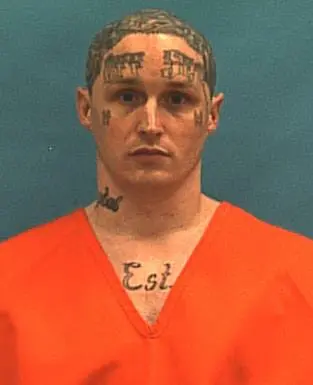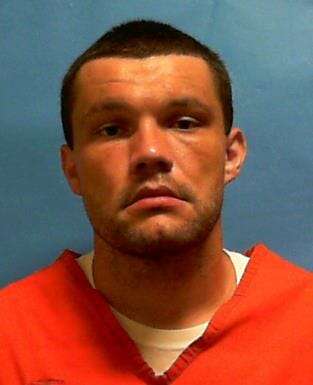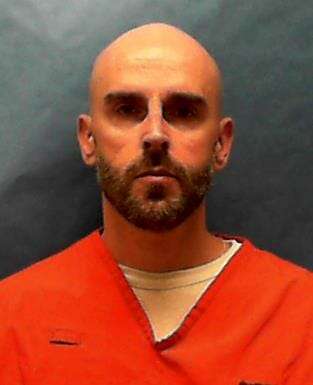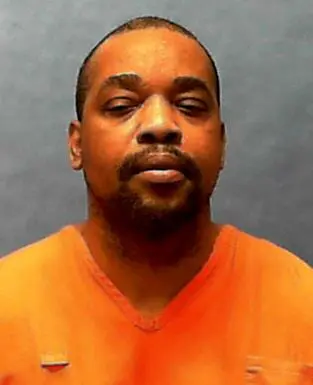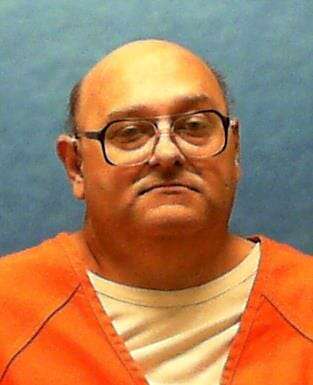
Edward Covington was sentenced to death by the State of Florida for a triple murder. According to court documents Edward Covington would murder Lisa Freiberg, 26, and her children, Zachary, 7, and Heather Savannah, 2, on Mother’s Day in 2008. Edward Covington would be arrested, convicted and sentenced to death.
Edward Covington 2021 Information
| DC Number: | R56925 |
|---|---|
| Name: | COVINGTON, EDWARD A |
| Race: | WHITE |
| Sex: | MALE |
| Birth Date: | 06/13/1972 |
| Initial Receipt Date: | 06/01/2015 |
| Current Facility: | UNION C.I. |
| Current Custody: | MAXIMUM |
| Current Release Date: | DEATH SENTENCE |
Edward Covington More News
In May 2008, Lisa Freiberg lived in Lutz, Florida, with her two children, seven-year-old Zachary and two-year-old Heather Savannah, and her boyfriend, Edward Allen Covington. Covington met Lisa through an online dating site and moved into her home in April 2008. On May 11, 2008, Covington murdered Lisa, Zachary, and Heather Savannah. He also killed the family dog, Duke.
Three days before the murders, Lisa’s mother, Barbara Freiberg, noticed that Heather Savannah had a swollen lip. When Barbara asked about it, Covington said that he must have caused it by rubbing too hard when wiping Heather Savannah’s face. The next day, Friday, May 9, 2008, Barbara noticed that Heather Savannah also had hand prints and bruises on her buttocks and that the inside of her swollen lip was cut. Barbara photographed Heather Savannah’s injuries and showed them to Lisa later that day. Barbara told Lisa that she believed that Covington was responsible for the injuries. Zachary and Heather Savannah spent the night with Barbara that night. When Lisa picked the children up around noon the next day, Lisa told Barbara that Covington said that it had to have been the babysitter who caused Heather Savannah’s injuries.
Around 2 p.m. that Saturday, Covington’s probation officer, Stephanie Laureno, stopped by Lisa’s home to see Covington. Covington, Lisa, and the children were all home at the time. According to Laureno, Covington appeared calm, did not say anything that was alarming or concerning, and his interactions with Lisa and the children seemed normal.
That evening, Tom Fish, who is Lisa’s ex-boyfriend and Heather Savannah’s father, asked Lisa to bring the children to his mother’s house for family pictures. Lisa and Covington brought the children to Fish’s mother’s house, but Covington did not go into the house at first. At some point, Covington did go into the house and visited with Fish and his family for about forty-five minutes. During the visit, when Zachary referred to Fish as “Tom–Tom,” Covington corrected Zachary and insisted he address Fish as “sir.” Covington explained that he believed in being strict with children. Fish did not observe anything unusual about Covington’s speech or demeanor.
The following day was Mother’s Day, and Barbara was surprised that she did not get a call from Lisa. On Monday, May 12, 2008, when Lisa did not drop the children off at the babysitter’s house as expected, Barbara and her husband drove over to Lisa’s house to check on her. When Barbara opened the door and looked into the house, she saw Zachary’s deceased, nude body and called 911.
Law enforcement responded to the scene and found the home in complete disarray. The furniture was turned over and there was blood on the floors, walls, and surfaces in every room except the bathroom. In addition to Zachary’s body, they found the bodies of Heather Savannah, Lisa, and the dead dog at various locations throughout the house. Heather Savannah had been dismembered and decapitated. Zachary’s genitals had been mutilated. Lisa’s body was in the doorway of the master bedroom, with a bloody handprint on the wall nearby. The dog’s body was on the floor in Heather Savannah’s bedroom. Two hammers and five knives that appeared to have been used in the murders were found and collected. A mesh bag containing bloody clothing was found under the mattress in the master bedroom.
Law enforcement found Covington in a closet in one of the bedrooms. He indicated that he had taken a number of pills. Depakote and Seroquel pills prescribed to Covington were found in the house. Covington was medically cleared by paramedics at the scene but transported to the hospital for further diagnosis and clearance. As he was being transported to the hospital, Covington looked back and stated, “I can’t believe what I’ve done.” After Covington was released from the hospital on May 14, 2008, he was transported to the Sheriff’s Office, where he was interviewed by detectives and confessed to the murders.
Covington was indicted for three counts of first-degree murder, three counts of abuse of a dead body, and one count of cruelty to an animal. A jury was sworn and opening statements were heard on October 22, 2014. On the first day of trial testimony, October 23, 2014, Covington announced that he wanted to change his pleas to guilty and waive a jury for the penalty phase. The trial court would not accept Covington’s guilty pleas at that time but instead appointed two experts to evaluate Covington’s competency to plead guilty. The evaluations and the doctors’ reports were completed that evening.
When court reconvened the next day, Covington was given time to meet with his attorneys and his family. Covington then reaffirmed his desire to plead guilty and waive a penalty phase jury. Covington’s counsel supported his decisions to plead guilty and waive a penalty phase jury. The court then conducted a comprehensive plea colloquy with Covington during which the court thoroughly informed him about the rights he was waiving. Covington indicated both verbally and in writing that he understood the consequences of his pleas, that although he was on psychiatric medications, there was nothing that would impair his understanding of his decision, and that he was not being threatened or coerced into entering the pleas. The trial court accepted Covington’s pleas of guilty to all seven counts as charged in the indictment. Covington reaffirmed his desire to waive a penalty phase jury, and the trial court accepted his waiver. The parties stipulated that as part of the penalty phase, the trial court should consider the testimony of the four witnesses who had testified during the abbreviated guilt phase.
Covington’s May 14, 2008, interview with detectives was played at the penalty phase. In the interview, Covington said that he met Lisa through an online dating site in August 2007, and they hit it off. He said that he had been living with Lisa on and off but officially started living with her a couple of weeks before the murders and everything was going great. He said Lisa and the children loved him. He talked about the days leading up to the murders. He said that he and Lisa were having problems potty-training Heather Savannah and that she had not been eating properly. He knew that Barbara had seen marks on Heather Savannah and that she thought he was abusing the children. Barbara told Lisa that she did not want Lisa to take the children back home while Covington was there. Covington denied abusing the children and said it “really, really ticked [him] off” that Barbara thought he was. He admitted that he had hit Heather Savannah on the leg when she picked up a cell phone a couple of days before the murders but said he did not mean to hit her hard. He also admitted that the marks could have occurred when he spanked Heather Savannah, but he said he did not realize he spanked her that hard.
Covington said that Lisa picked up the children from Barbara’s on Saturday afternoon, the day before the murders. Covington prepared lunch for the children and dinner for the four of them. They ate dinner around 6 p.m. and then took the children to visit with Fish’s family. While the children and Lisa were visiting, Covington said he needed to go check his mailbox and left, but he actually went to buy and smoke crack cocaine.
According to Covington, when they got home around 9:30 p.m. or 10 p.m., the children went to bed, and Covington and Lisa had a drink together and had sex. Covington then played a computer game. He and Lisa went to bed around midnight or 1 a.m. Before bed, Covington said he “took a handful of Seroquel” because he was “dog tired” and it had not been as effective recently. He said he took roughly 1,000 milligrams of Seroquel (including four 200–milligram, extended release pills), which he described as “a hundred [milligrams] over the max[imum] safe dose.” Covington said when the Seroquel works properly, “it’s like turning off a light switch. ․ [A]ll the extra thought ․ shuts off, everything goes quiet.” The extended release Seroquel was new to Covington and he said the first time he took one 200–milligram pill, the effects lasted twenty-six hours. Covington said that Lisa fell asleep in his arms. Covington initially told the detectives that he did not know what happened next, but he then admitted that he “kind of” remembered what happened the next morning and described what he said he remembered about the murders.
Covington said that Lisa and Zachary were still in bed around 10:30 Sunday morning when he found Heather Savannah awake and lying on the couch in the living room. Covington asked Heather Savannah “what she was doing up and she just started to cry.” He said “that is the last recollection of being in control I know of” and the next thing he remembered was all the chaos and killing. He said that he killed Heather Savannah first, that he “hurt her the most,” and that he “cut her in half” with a bread knife. He said the first thing he did was cut Heather Savannah’s throat, “the jugular,” while she was lying on the couch and he was standing over her. He used four back-and-forth motions. He said he then “literally ripped Savannah in half,” “almost like carving a pig.” He said he had to get her undressed in order to cut her in half. He believed she was dead at that time but could not be sure. He also decapitated Heather Savannah and set her head by the front door. Although he initially said Heather Savannah was crying, he later said she never yelled or cried. He specifically remembered that the bread knife he used on Heather Savannah was bent in the process. When asked about a bite mark on Heather Savannah’s arm, he said he may have left that the night before, because she was biting Zachary and in order to “break[ ] her on that[,] ․ we would bite her back.”
After he killed Heather Savannah, Covington remembered choking and strangling Lisa. He said he did not remember punching her but thought he might have because he remembered her having a bloody face. He said he used a two-and-a-half-inch-wide butcher knife and an upward motion to stab her in the chest, which he believed “probably perforated the heart and the lung.”
Zachary was still asleep in his top bunk when Covington stabbed him. Zachary did not say anything during the stabbing, and Covington thought that was because he stabbed Zachary’s heart. He thought he stabbed Zachary three times, once in the back and twice in the chest cavity. He remembered a “chopping knife” breaking off inside Zachary when it hit bone. Covington then brought Zachary to the living room and removed his scrotum and penis. He said that the mutilation did not have a sexual basis and that he used pliers to touch Zachary’s penis.
Covington killed Duke last, by punching him and hitting him with a hammer.
Covington said that after Lisa was dead, he kept hearing her voice, so he cut her again. Then he “got what [he] could find of Savannah and Zachary and put ’em over by the front door.” He remembered calling his ex-wife, Cheri, twice, but she did not answer, and he thought he may have left a message the second time he called.1
Covington said that at some point he thought this must be a nightmare and that he better take some more Seroquel. He thought it was at that time that he took Depakote, aspirin, Tylenol, and caffeine. He vaguely remembered falling down in the closet while he was looking for clothes. The next thing he remembered was the police officers telling him to get out of the closet. He did not know how long he had been in the closet but remembered that it was daylight when he went in.
Covington described himself to detectives as a time bomb that had been waiting to explode and finally blew up. He said he did not know why he blew up because Lisa, Zachary, and Heather Savannah did nothing wrong.
Dr. Leszek Chrostowski, the medical examiner who performed the autopsies, testified about the causes of the victims’ deaths and the injuries they received.
Lisa’s death resulted from a knife wound to her neck, which transected her trachea, esophagus, and left common carotid artery. It was a gaping wound, eleven centimeters long, which appeared to have been made by a back-and-forth sawing motion with a knife. Prior to the infliction of the fatal wound, Lisa suffered severe injuries to her face, which were likely caused by a beating. Lisa had contusions and abrasions to her shoulders and chest, a five-inch cut and stab wound to her left breast, a superficial, eight-centimeter laceration across her abdomen, which extended into a twenty-eight-centimeter abrasion, and contusions on her right foot, all of which were inflicted when she was still alive. She also had multiple cuts to her hands and fingers, which were consistent with defensive wounds. She suffered a perimortem 2 skull fracture, consistent with blows from the smaller hammer found at the scene, which caused the whole area at the base of her skull to become fragmented. Based on the fact that there were multiple injuries on all of Lisa’s body surfaces in different planes, Dr. Chrostowski opined that Lisa was conscious during the attack, moving around and trying to escape the injuries. Stab wounds to her abdomen and pubic region were inflicted after her death.
The cause of Heather Savannah’s death was a cut to the front of her neck. Prior to the infliction of the fatal wound, Heather Savannah was severely beaten—her cheek was cut down to the bone, the top of her head was cut with a knife in a scalping motion, and both of her femurs were fractured. The femur fractures were spiral fractures, which Dr. Chrostowski said is “a hallmark of child abuse” that results from “jerking” a child. Dr. Chrostowski opined that the leg fractures and head trauma occurred when Heather Savannah was “grabbed by the legs and hit against something.” After death, Heather Savannah’s body was fragmented. She was decapitated and her torso was cut from the genital region through the chest. Her right leg and hip were entirely removed from the body. Heather Savannah also suffered postmortem fractures to her tibia and fibula and multiple stab wounds to her chest and abdomen.
Zachary died as a result of five stab wounds to his neck and back, which caused internal injuries to his vessels and organs, including his heart. Prior to his death, Zachary’s skull was fractured in a manner consistent with blows from the larger hammer found at the scene. Prior to the infliction of the fatal wounds, Zachary was also stabbed in the sacral region, during which the knife broke and the blade was left embedded in the bone. A different knife was later used to inflict the fatal stab wounds. A large, gaping wound to the front of Zachary’s body, which exposed some of his internal organs, was inflicted perimortem. After Zachary was dead, his genitals were removed, additional stab wounds were inflicted to his chest and back, and decapitation was attempted.
Dr. Chrostowski also determined that the blows to Duke’s head were consistent with the larger hammer found at the scene.

